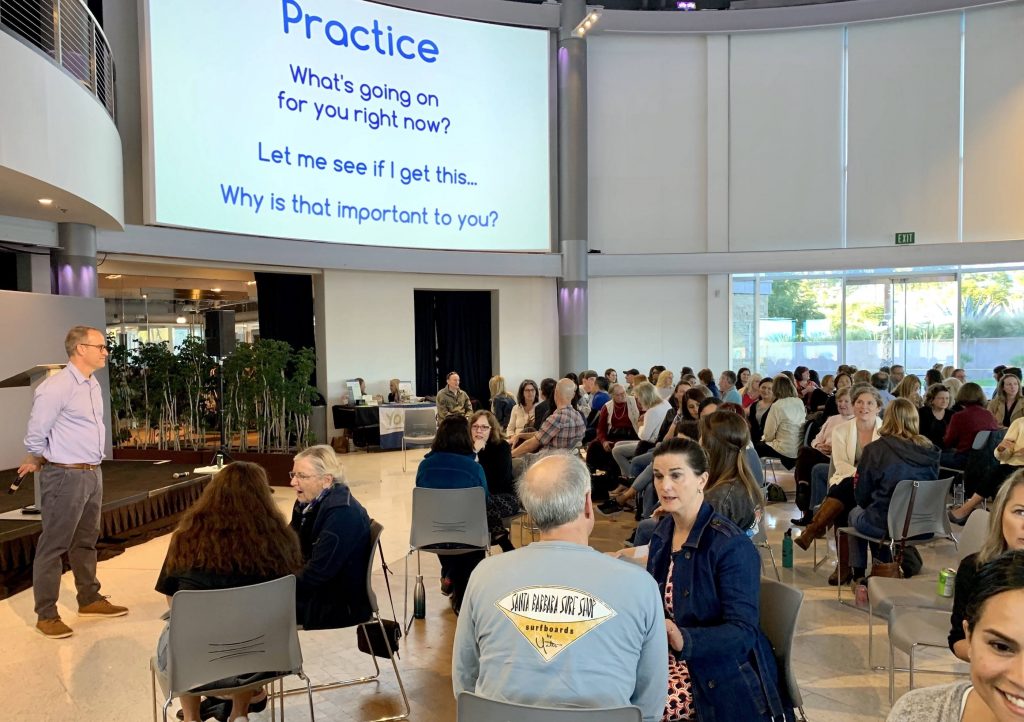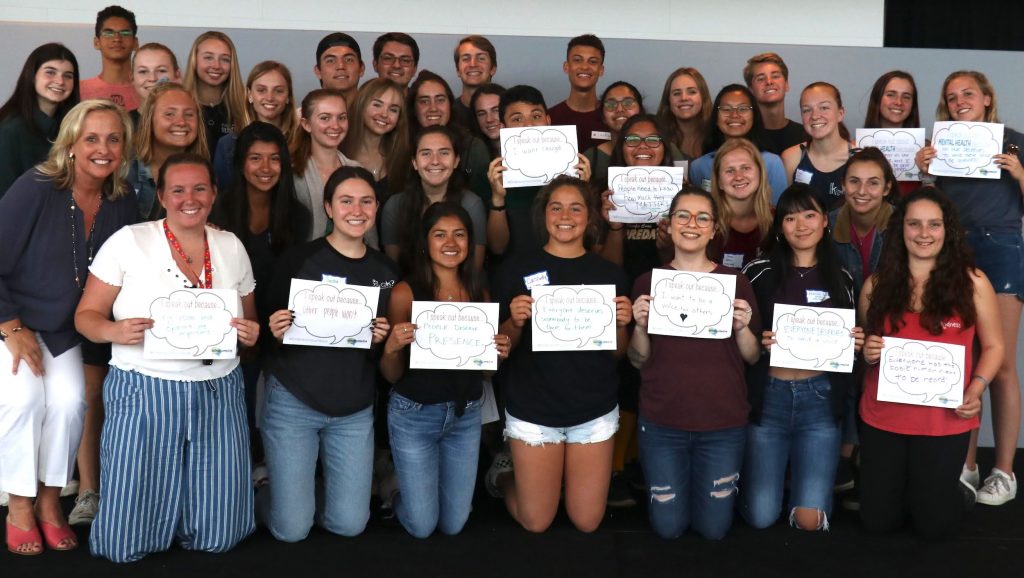BY KARA SHOEMAKER | February 12, 2020
According to the U.S. Department of Health and Human Services, one in five adolescents has had a serious mental health disorder, and less than half of young people dealing with a psychiatric disorder have received any kind of treatment. When left untreated, mental health disorders can lead to serious – even life-threatening – consequences. Depression and other mental health disorders are major risk factors for suicide, which is the second leading cause of death for 15 to 24 year olds in the United States.
In Santa Barbara County, teens are struggling with mental health and our community is feeling the consequences. In 2018, 64 students in the Santa Barbara Unified School District attempted suicide. To make matters worse, teens in crisis often have trouble finding and accessing resources for early prevention and treatment. There are very few resources in the county, and what resources are available are aimed at low-income and at-risk youth, the assumption being that families with insurance can easily attain help. This is not always the case.
No one knows this better than Rachael Steidl. When one of her daughters began struggling with mental health in 9th grade, she was shocked at how difficult it was to find the right support. After months of wading through stacks of agency brochures, and making countless calls to local wellness organizations and her insurance company, Rachael was only able to find help for her daughter outside the county.
After this daunting experience, Steidl decided to sell her business of 15 years, ParentClick, and focus all of her energy on addressing the youth mental health crisis and improving access to youth wellness services in Santa Barbara County. She began by spending several months meeting with counselors from local high schools and talking to service providers to better understand the state of teen mental health.
“Some of the things I kept hearing was ‘We are not trained as academic counselors to do this work. We are doing more around youth mental health and crisis than we are around academic counseling now. We are putting band aids on the problem’” recalled Steidl. Like many others, she had assumed that all the school counselors had therapeutic training, when in reality most academic counselors have received little to no mental health training.

Over the past 4 years, Steidl has spent many hours on the phone with overwhelmed parents who are challenged to find services for their teens.
“What happens for families is that they call one agency looking for help and get told they are not in crisis enough, or too in crisis, or we have a waiting list and we can’t help you, call this organization instead. Working parents are trying to make these calls to help their kids and they are sent on a wild goose chase of agencies to call. As a result, these families in crisis feel incredibly overwhelmed by this process,” said Steidl. “We need to be providing warm-handoffs that ensure when a referral is made, the youth will be able to access the service [they need]. We also need to practice more compassion and take time to really listen. Not because people don’t care, but our providers and our educators are overwhelmed by the need and as a result may go into autopilot with how they refer. We are not stopping to really connect and take the time to ensure that the family is going to get the support they need.”
To complicate matters, most services in the county are aimed at crisis response rather than prevention and early intervention. Teens who are not in immediate crisis are put on a waiting lists, which puts them at greater risk of self-harm.
In 2016, Steidl reached out to the Santa Barbara Foundation to reserve a conference room for a meeting that would pull together leaders from organizations across the county that had a stake in youth mental health. The goal of the convening was to break down the organizational “silos” and facilitate conversations between agencies to gain clarity on the realities of the current youth mental health crisis. In these early meetings, Steidl asked that everyone to come willing to share what was not working well within their organizations and to acknowledge shortcomings and gaps when it comes to serving our youth.
“For instance, if an organization has a waiting list, that’s actually a problem and not something to be proud of. Kids can’t wait six months to see a professional, so we need to see wait lists as an issue that we all tackle together. So let’s start thinking about how we can leverage resources to address this problem,” said Steidl. “Let’s identify the gaps in services and let’s make sure that when we talk about youth, we are not leaving anybody out. Across Santa Barbara, every family should be able to walk in and get mental health support if they need it.”
Addressing these challenges would take more coordination and more work than could be accomplished by just one meeting. The group has since evolved into the YouthWell Coalition, which is comprised of nearly 50 community partners that meet six times a year at the Mental Wellness Center. The Coalition mission is to improve prevention, education, and early intervention outreach in Santa Barbara County.

“The Mental Wellness Center is proud to both participate in and act as the fiscal sponsor for the YouthWell Coalition. It’s been exciting to witness the impact that is achieved when, collectively, mental health providers adjust our view to the big picture mental health needs of our community and link arms with schools, physicians, law enforcement and parents. We are lifting each other up as agencies and working to bring about more resources for all youth,” said Mental Wellness Center CEO, Annmarie Cameron.
YouthWell has been providing parent community workshops for the past year to engage and educate parents so that they feel more informed and to help provide tools so that they can support their teens. This year, they are doing a series of Mindful and Compassionate Listening workshops because often listening is the greatest tool we have to show our support.
YouthWell has partnered with the Family Service Agency and the Mental Wellness Center to offer Youth Mental Health First Aid to the community for free. This is a comprehensive training specifically designed to equip educators, family members, and caregivers with the skills and knowledge to identify, understand, and respond to the signs or risk factors of mental illness and substance use disorders in youth. In 2019, over 500 parents, educators and providers, as well as 160 educators in the Santa Ynez Valley were certified. And most recently, Steidl worked with the Mental Wellness Center to pilot Teen Mental Health First Aid to 200 students at Bishop Diego Garcia High School.
The Coalition has developed the Youth Mental Health & Wellness Resources flyer, which contains the names of local nonprofit and for-profit service providers with a quick synopsis of the services provided by each organization. Now, instead of wading through stacks of agency brochures or spending hours scouring the internet, parents can easily locate the appropriate resources for their struggling teen. The flyer is available in both English and Spanish and can be accessed on the YouthWell website or at school campuses across the county.

The Mental Wellness Center, local high schools, and Steidl have worked together to empower students to take charge of their own mental health through the Youth Wellness Connection clubs at local high schools. Many students struggle because they feel isolated, so joining a club of their peers gives them the opportunity to gain community and learn about self-care, positive stress management, and kindness through connection, prevention, education & outreach activities. They also become advocates that raise awareness and work to eliminate stigma around mental health among their fellow students.
“The Centers for Disease Control and Prevention report that depression and anxiety have increased over time for children ages 6 to 17. Because of this and other behavioral health challenges, no one agency can address this alone. Accordingly, partnerships like the YouthWell Coalition are needed if change is to occur in our community,” said Pedro Paz, Director of Grantmaking at the Santa Barbara Foundation.
Currently, the YouthWell Coalition is looking at opportunities to work with our county to bring Allcove to Santa Barbara which is an integrated health care space for youth, ages 12-25. Allcove centers are being developed in Santa Clara County modeled after Headspace (Australia) and Foundry (Canada).
“I am proud that four years later – even though it’s been challenging – community trust is being built and people are showing up,” said Steidl. “We have 35 plus organizations, school districts, law enforcement, and our medical community showing up and we are having strong conversations around mental wellness in Santa Barbara County. We are making progress.”
To learn more about the YouthWell Coalition, please visit youthwell.org. For more information about the Santa Barbara Foundation’s Behavioral Health Grant Program click here.